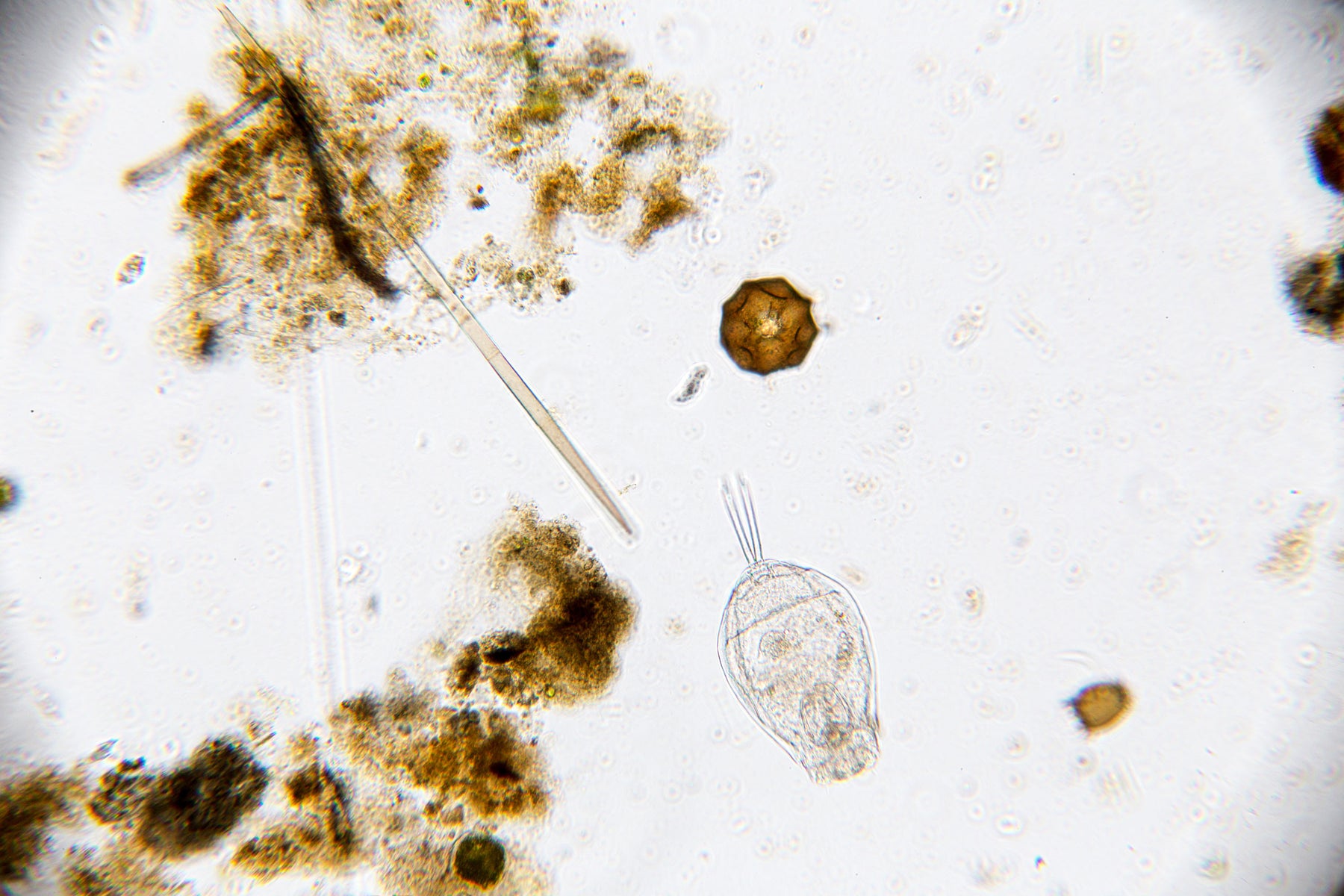
Stereo microscopes for viewing soil structure - which is the best?
Segmented giants with hairy legs and bulging eyes scurry through the cobweb draped caverns. Moving back from the eyepieces, little more than a handful of dirt lies on the petri dish beneath the microscope lens. Back to another set of eyepieces and a myriad of tiny dots, larger egg shapes, and lengths of twigs are being swished around in a clear jelly by what appears to be a snake like worm. Moving back from these eyepieces, little more than a smeared piece of glass lies beneath the microscope lens.
Different types of microscopes allow you to see different soil biology. Will you choose a stereo microscope to see the microarthropods, small worms, mycelium and soil structure amongst others, or a light compound biological microscope to see the tiny microbes that form a foundation of soil health … or will you choose both?
Stereo microscopes allow the viewer to see soil structure, microarthropods, and the webs of mycelium. They can be used to do counts of soil biology such as microarthropods that have been extracted from a soil sample. Extraction can be done by placing a small quantity of soil in a gauze lined funnel with the lower opening over a jar of water and placing a light to shine directly into the sample for a number of hours.
Stereo microscopes for example the Optico ASZ-400B Binocular Stereo Zoom Microscope are sometimes called dissecting microscopes. They allow the user to view 3D objects to around 45 times higher magnification than can be seen with the naked eye. Stereo microscopes use two light sources - upper and lower lights – to illuminate the sample for viewing.
Samples can be placed on a petri dish and are manually positioned to change the field of view. These samples can also be adjusted in situ such as with a probe or tweezers to reveal different fields of view to expose hidden soil biology.
Light compound or biological microscopes allow the viewer to see microbial soil biology – bacteria, fungi, protozoa and nematodes. These organisms form the lower trophic levels of soil food chains. When they are not present, larger organisms will lack food. Light compound microscopes are also known as biological microscopes. They allow the viewer to see soil biology at up to 1000 times the magnification that can be seen with the naked eye.
Light compound microscopes use light managed by switches, dimmers, objectives and diaphragms to illuminate the soil biology being observed. Soil biology is extracted in a water solution and applied as a drop to a microscope slide to provide a thin uniform layer that has a cover slip applied to protect objectives. Due to the ‘closed’ nature of the sample, light and focus are used to explore the sample rather than the probe and tweezers used with the stereo microscope.
In summary:
|
|
Light Microscope |
Stereo Microscope |
|
Objects |
Thin layers |
3D |
|
View transparent organisms |
Yes |
No |
|
View microorganisms |
Yes |
No |
|
View arthropods |
No |
Yes |
|
Level of magnification |
40-1000X |
10-45X |
|
Light source |
Below the sample |
Above and below the sample |
|
Able to adjust sample in situ |
No |
Yes |
Light compound microscopes and stereo microscopes are used in very different ways to explore soil microbiology. For soil biology professionals and keen hobbyists alike, both microscopes will have a place.
If you need help on which microscope to buy for soil biology, talk to us. We have an expert who can guide you throughout the process, please click on the chat box or contact us.
